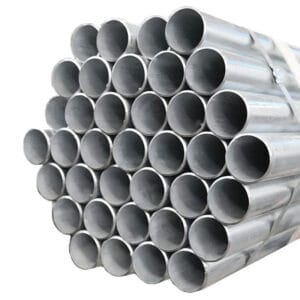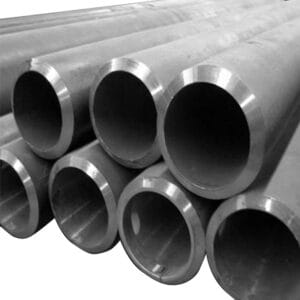Description
Durable and Reliable BI Pipes for Industrial and Construction Applications
Industrial-grade Bi pipes(Black Iron) are the go-to choice for water supply systems, fire protection, and other utilities. These pipes offer superior corrosion resistance, ensuring long-term reliability. These products are specifically designed and manufactured to meet the highest standards in the industry. They undergo rigorous quality control processes to ensure that they are durable, reliable, and suitable for a wide range of applications. Whether you’re working on a small residential project or a large industrial development, these materials provide the strength and support needed to ensure the success of your construction. Their versatility and adaptability make them an essential component in modern engineering and architecture.
Read More
Manufacturing Standards and Quality Assurance
The production of BI pipes adheres to strict international manufacturing standards (view ASTM standards). Each pipe undergoes comprehensive testing procedures to verify structural integrity and performance capabilities. The manufacturing process includes precise metalworking techniques, specialized coating applications, and thorough quality inspections to ensure consistent product excellence.
Cost Efficiency and Economic Benefits of BI Pipes
The implementation of BI pipes offers significant long-term economic advantages for construction and infrastructure projects. When evaluating the total cost of ownership (explore lifecycle costs), BI pipes demonstrate superior value through their durability, minimal maintenance requirements, and extended service life. The initial investment in quality BI pipe systems typically results in reduced replacement and repair costs over time.
Return on Investment Analysis
Understanding the financial implications of BI pipe installations requires consideration of several factors:
- Lower maintenance frequency compared to alternative materials
- Reduced downtime due to superior durability
- Extended service intervals for inspection and repairs
- Decreased replacement costs over the system lifetime
- Enhanced energy efficiency in fluid transport applications
The economic benefits become particularly apparent in large-scale industrial applications where system reliability directly impacts operational efficiency. Facilities managers and project planners increasingly recognize that investing in high-quality BI pipe systems yields substantial cost savings through reduced maintenance requirements and improved operational performance. Additionally, the robust nature of BI pipes minimizes the risk of costly emergency repairs and unplanned system shutdowns, contributing to better financial predictability and resource allocation.
Material Composition and Properties
BI pipes are crafted from high-grade steel with specific carbon content that enhances their strength and durability. The surface treatment process (learn about pipe treatments) creates a protective layer that significantly improves corrosion resistance while maintaining the pipe’s inherent strength.
Applications and Use Cases
Industrial Applications
In industrial settings, BI pipes serve critical roles in:
- Process fluid transport systems
- Compressed air distribution networks
- Fire suppression systems
- Chemical transfer lines
- Steam distribution networks
- Industrial cooling systems
Commercial and Residential Uses
These versatile pipes find extensive application in:
- Building water supply networks
- Fire sprinkler systems
- HVAC installations
- Gas distribution systems
- Structural support components
This comprehensive guide to BI pipes demonstrates their crucial role in modern construction and utility systems. Understanding their specifications, applications, and maintenance requirements helps ensure optimal material selection and long-term performance success.
Technical Specifications
Structural Pipes – ½” to 16”
Standard (Schedule 40) – ½” to 16”
Light Series – ½” to 16”
Please call for inquiries.
Installation Guidelines
1. Preparation & Handling
- Inspect pipes for defects, rust, or damages before installation.
- Store pipes in a dry, covered area to prevent corrosion.
- Use appropriate lifting equipment for heavy or large-diameter pipes.
2. Cutting & Threading
- Use a pipe cutter or saw for clean, precise cuts.
- Apply threading compound or Teflon tape on threaded connections to prevent leaks.
3. Joining Methods
- Threaded Joints – Securely tighten using pipe wrenches, ensuring a leak-free fit.
- Welded Joints – Performed by skilled welders for permanent connections, commonly used in industrial applications.
- Flanged Joints – Used for large-diameter pipes, allowing easy maintenance and disassembly.
4. Installation & Support
- Use proper hangers, brackets, or clamps to support pipe weight and prevent sagging.
- Maintain appropriate spacing between pipe supports based on pipe diameter and application.
- Ensure pipes are installed with proper slope for drainage and fluid flow.
5. Corrosion Protection & Maintenance
- Apply protective coatings or paint to prevent rust, especially in outdoor or humid environments.
- Regularly inspect for leaks, rust, or damage and replace worn-out sections as needed.
- Flush pipes before use to remove debris and contaminants.
Industrial Applications
1. Oil & Gas Industry
- Used for transporting crude oil, refined petroleum, and natural gas.
- Applied in refineries, processing plants, and offshore platforms.
2. Manufacturing & Fabrication
- Essential in machine frames, conveyor systems, and structural supports.
- Used in industrial ventilation and exhaust systems.
3. Power Plants & Energy Sector
- Applied in boiler systems, steam pipelines, and cooling towers.
- Used in power transmission structures and generator enclosures.
4. Automotive & Heavy Equipment
- Found in exhaust systems, hydraulic lines, and vehicle chassis reinforcements.
- Used in construction machinery and mining equipment.
5. Shipbuilding & Marine Industry
- Utilized in ballast systems, deck structures, and fuel transportation pipelines.
- Applied in ship ventilation and drainage systems.
6. Agriculture & Irrigation
- Used in water distribution, drainage systems, and greenhouse structures.
- Applied in fertilizer and pesticide distribution systems.
7. Infrastructure & Construction
- Found in water supply, plumbing, and fire protection systems.
- Used in scaffolding, columns, and framework for buildings and bridges.






